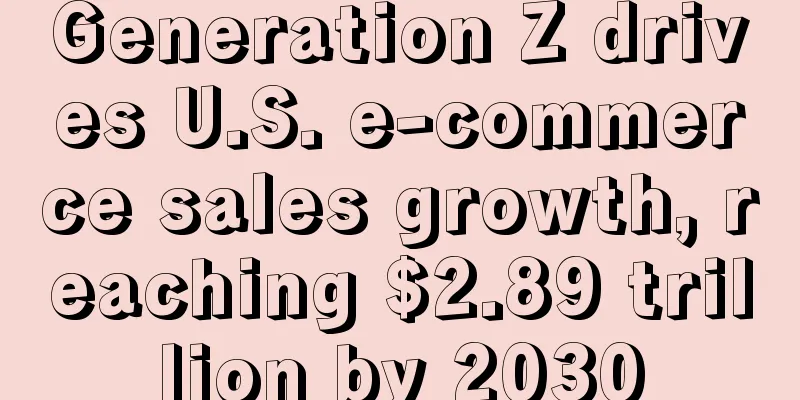211 billion US dollars market! The top 20 brands in the global resale market are announced!

|
IPMARK.com has released the 20 most popular brands in the second-hand market. The second-hand clothing market will continue to grow in the next few years. According to data collected in the "Resale Report 2023" report compiled by the second-hand platform ThreadUp, global second-hand sales are expected to reach US$351 billion in 2027. The global second-hand fashion market grew by 28% to $177 billion in 2022, compared to 2021 figures ($138 billion). The trend is expected to continue to rise in 2023, when it is expected to reach $211 billion, and is expected to grow by 10% in 2024 ($248 billion). The global second-hand fashion market grew by 28% to $177 billion in 2022, compared to 2021 figures (US$138 billion). The trend is expected to continue to rise in 2023, when it is expected to reach $211 billion, and in 2024 it is expected to grow by 10% to $248 billion. Here are the 20 most popular second-hand brands sorted out by IPMARK.com: US Market In the United States, for example, the apparel resale market will have a turnover of $39 billion by 2022, growing five times faster than the traditional industry. The U.S. apparel resale market is expected to accelerate growth by 26% by 2023. By 2024, it is expected to grow by 33%. The report states that the U.S. resale market is expected to grow nine times faster than the apparel market by 2027. ThreadUp research further shows that 52% of Americans purchased second-hand clothes in 2022. 75% of respondents confirmed that they have purchased or are willing to purchase second-hand clothes, and this figure rises to 83% for Generation Z. Online Shopping The U.S. market for online secondhand clothing purchases is expected to reach $38 billion by 2027, growing twice as fast as traditional markets. In fact, it’s expected to grow at an average annual rate of 21% over the next five years. Across generations, the youngest of the Generation Z leads online purchases of used clothing in the U.S. Looking ahead to 2027, the study shows an increase in the number of new buyers (60%), compared to the current 40%. Price remains the main driver for buying second-hand clothing, followed by quality, diverse offers, convenience and transparency. 47% of respondents said they would refuse to choose brands and retailers that do not promote sustainable clothing, a factor that has increased by 22% compared to 2021 data. Editor ✎Estella/ Disclaimer: This article is copyrighted and may not be reproduced without permission. |
<<: All channels are fully open! LOWE'S expands same-day delivery service across the United States!
>>: Shopify launches multiple new tools, focusing on AI to attract small brands
Recommend
Several common Amazon affiliate sales methods
"Affiliate selling" seems to be somethi...
Click-through rate soars! Amazon's new brand advertising policy
Amazon announced: After May 31st No ads using cust...
What is Yicang ERP? Yicang ERP Review
Yicang ERP is a simple and efficient cross-border ...
From 13 months to 5 years! Amazon advertising has undergone a major upgrade!
Amazon is about to launch another big move! Not l...
Latest survey: U.S. holiday shoppers demand faster delivery experience
It is learned that according to foreign media repo...
FBA warehouses are suspended! Amazon officially announced a reduction in the number of warehouses
Two days ago, Amazon held its first shareholders m...
Amazon's new performance indicator! Sellers are warned for product comparison pictures!
While most sellers are still focusing on price wa...
What is Salesbacker? Salesbacker Review
Salesbacker is an automated email sending tool for...
8 million frozen in account! Price chain went against the tide during the peak season, with a loss of nearly 10 million?
▶ Video account attention cross-border navigation ...
Latest Solution | How to deal with differences in shipments?
1. How to deal with the differences in shipments? ...
A large number of sellers received suspension warnings! Is the situation of Amazon Buyer Voice getting very bad?
Amazon has hurt me thousands of times, but I stil...
What is MySales? MySales Review
MySales helps you monitor and improve sales on you...
What is European Cup Testing Technology Service (Dongguan) Co., Ltd.? European Cup Testing Technology Service (Dongguan) Co., Ltd. Review
CPST Testing Technology Services (Dongguan) Co., L...
What is DealsPlus? DealsPlus Review
DealsPlus is a discount deal and coupon informatio...






![[On-site report] Detailed discussion of the pitfalls and opportunities of brands going overseas](/upload/images/67e70a4b8388e.webp)


